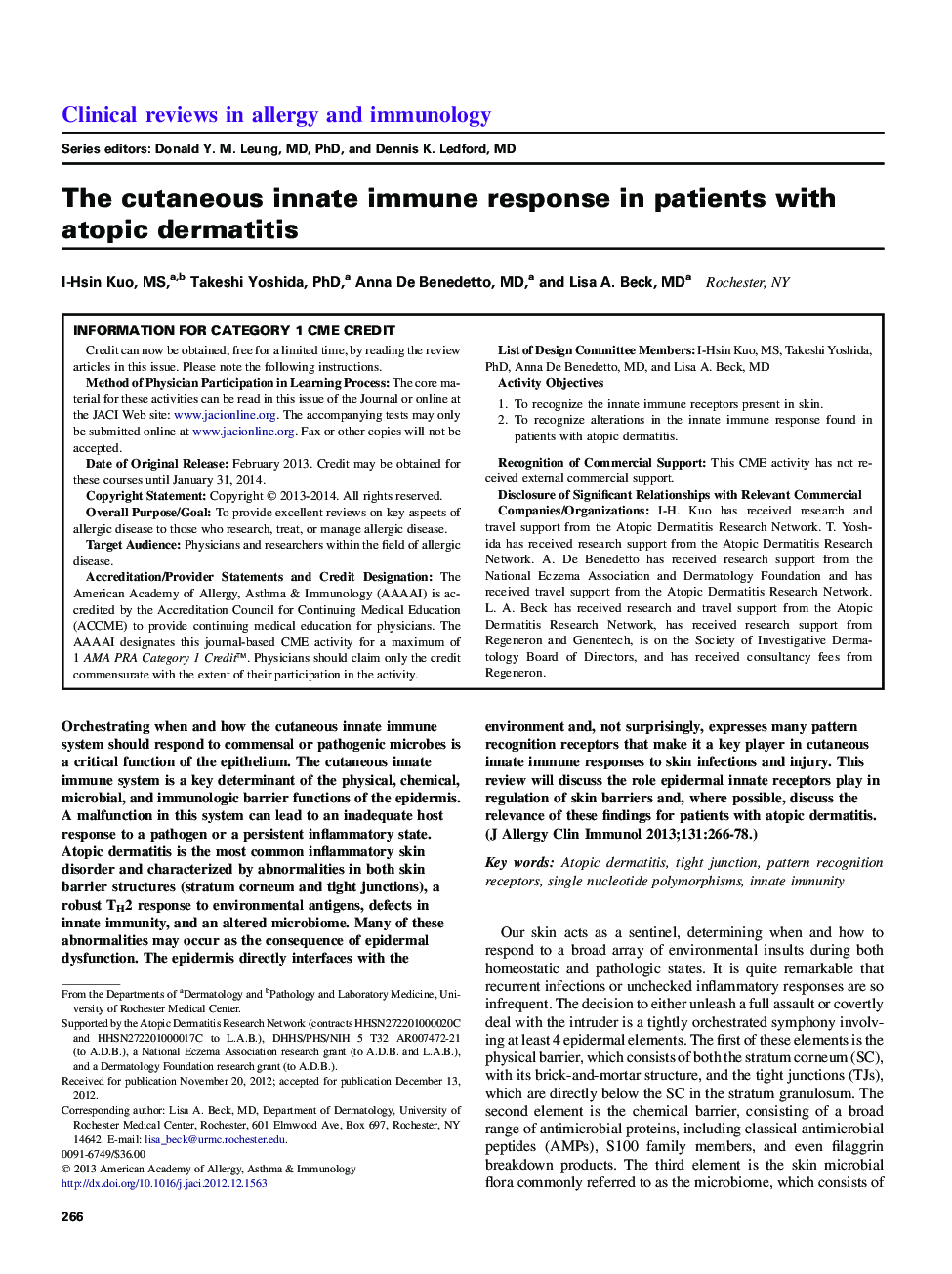| Article ID | Journal | Published Year | Pages | File Type |
|---|---|---|---|---|
| 3198221 | Journal of Allergy and Clinical Immunology | 2013 | 13 Pages |
Orchestrating when and how the cutaneous innate immune system should respond to commensal or pathogenic microbes is a critical function of the epithelium. The cutaneous innate immune system is a key determinant of the physical, chemical, microbial, and immunologic barrier functions of the epidermis. A malfunction in this system can lead to an inadequate host response to a pathogen or a persistent inflammatory state. Atopic dermatitis is the most common inflammatory skin disorder and characterized by abnormalities in both skin barrier structures (stratum corneum and tight junctions), a robust TH2 response to environmental antigens, defects in innate immunity, and an altered microbiome. Many of these abnormalities may occur as the consequence of epidermal dysfunction. The epidermis directly interfaces with the environment and, not surprisingly, expresses many pattern recognition receptors that make it a key player in cutaneous innate immune responses to skin infections and injury. This review will discuss the role epidermal innate receptors play in regulation of skin barriers and, where possible, discuss the relevance of these findings for patients with atopic dermatitis.
